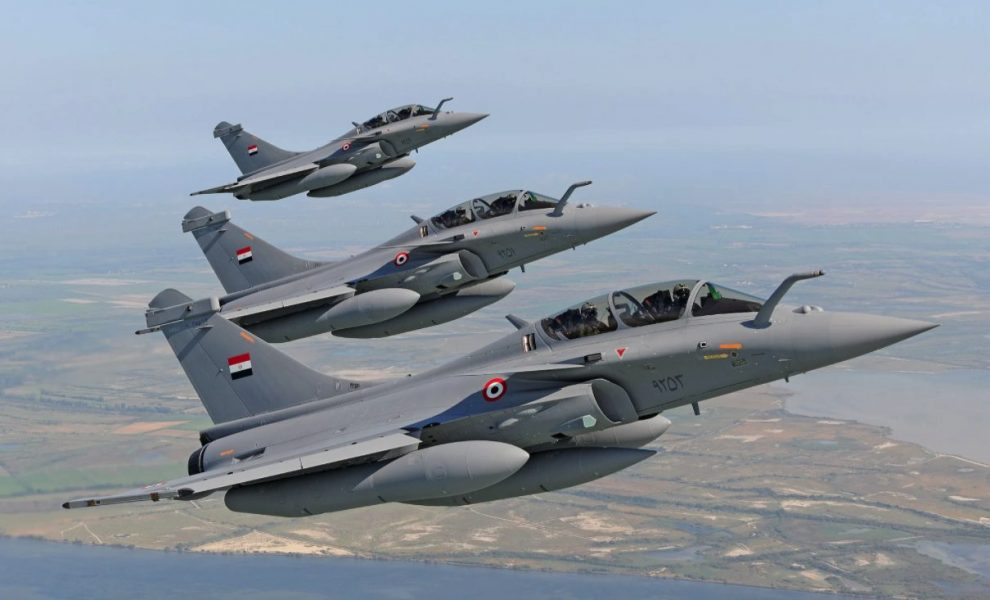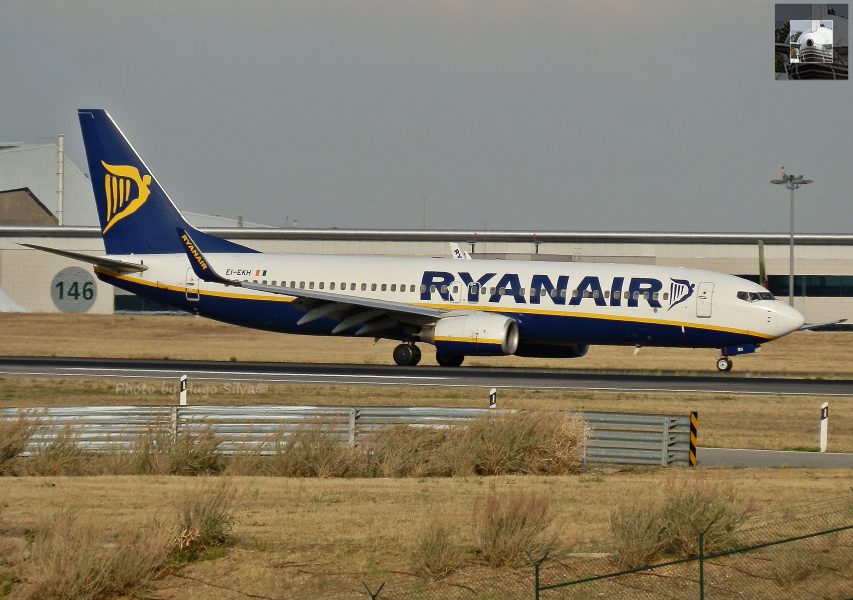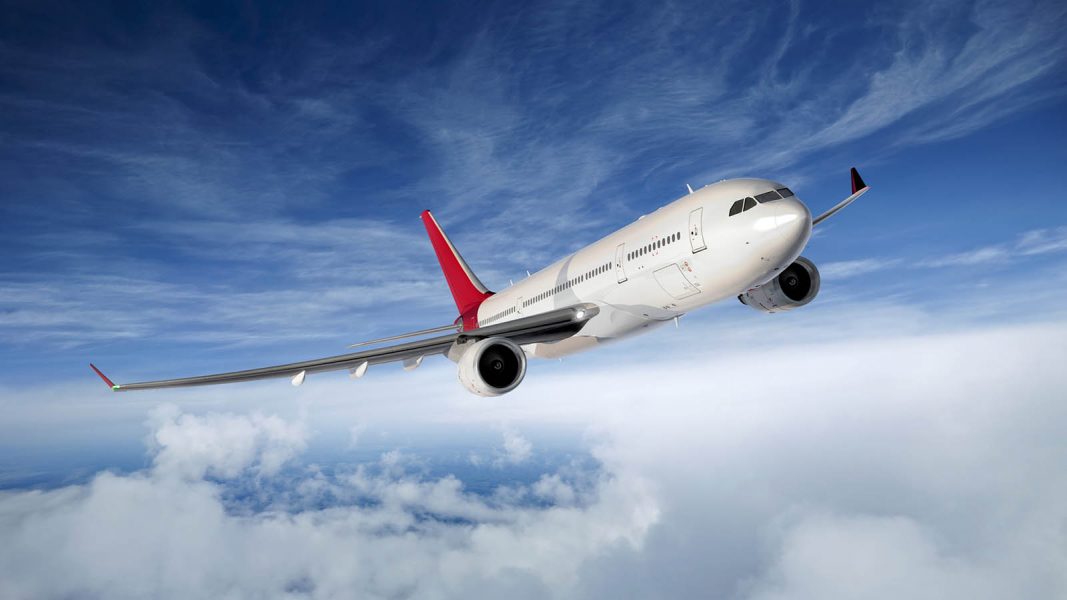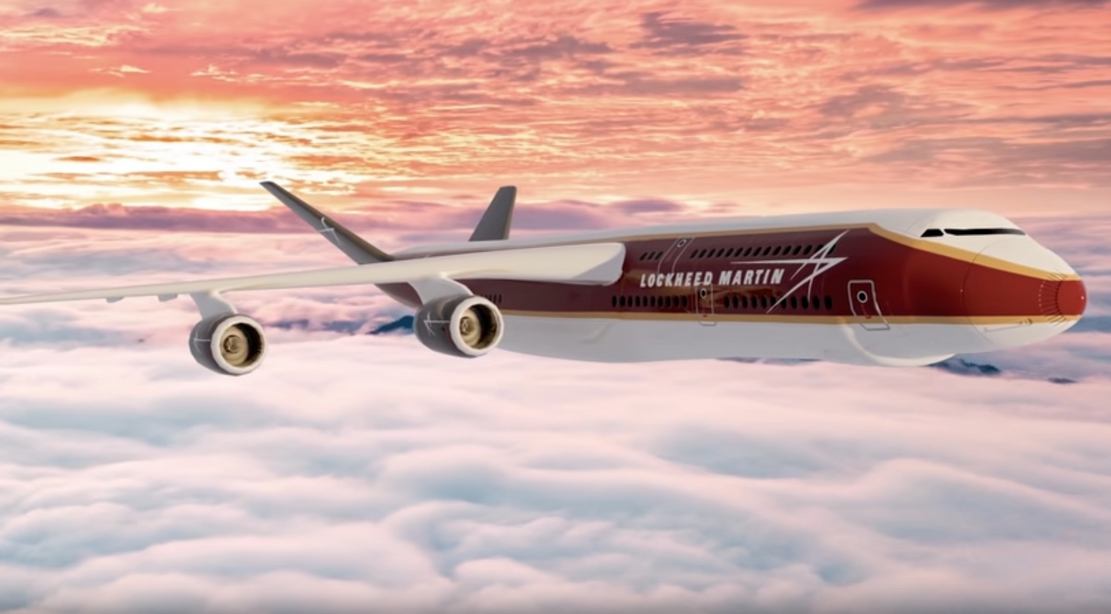Air France-KLM and IndiGo on Thursday, December 23 announced that they have entered into a codeshare agreement that allows each airline to sell seats on the other's flights.
With this new partnership, Air France and KLM will offer their customers access to 25 new Indian destinations, a joint statement mentioned. This means that once the codeshare agreement comes into force, Air France-KLM group will be able to sell seats, on its distribution system, of IndiGo flights on 25 domestic routes.
Similarly, IndiGo will also be able to sell seats on the European airline group's flights on more than 250 routes, the joint statement noted.
A codeshare agreement is a business arrangement in which two or more airlines publish and market the same flight under their airline designator and flight number as part of their published timetable or schedule.
From their hubs in Paris and Amsterdam, Air France and KLM operate flights to four Indian cities -- Delhi, Mumbai, Chennai and Bengaluru.
"Subject to government approval, this cooperation (codeshare) will start in February 2022," the statement mentioned.
IndiGo had in September also announced that it has entered into a code-sharing agreement with American Airlines, which will help place the latter’s code on 29 of IndiGo’s domestic routes in India. IndiGo also has codeshare agreements with Turkish Airlines and Qatar Airways.
Scheduled international passenger flights have been suspended in India since March 23, 2020. However, limited passenger flights have been operating between India and approximately 32 countries, including France and the Netherlands, under the 'air bubble' arrangements.
Read next
Ryanair on Wednesday, December 22 more than doubled its annual loss forecast and cut its January traffic estimate by 33%, blaming travel restrictions in France, Germany and Morocco following the emergence of the Omicron variant of the coronavirus.
But it said it was too soon to say whether similar cuts would be required to its February and March schedules and would wait for further scientific data before making any decisions.
The Irish low-cost airline, Europe's largest by passenger numbers, flew more than twice as many flights within the continent in the second week of December as any other airline, according to Eurocontrol, Europe's air traffic regulator.
(Image Courtesy - France 24)
But restrictions on British passengers flying to Germany and France - and all EU passengers to Morocco - forced Ryanair to cut its December passenger forecast to a range of 9 to 9.5 million, from 10 to 11 million, a company statement said.
Ryanair plans even deeper cuts in January, reducing its forecast to between 6 and 7 million from 10 million.
Chief Executive Michael O'Leary, one of the most outspoken critics of COVID-19 travel restrictions, last week said the mood in Britain and Ireland in the face of Omicron was one of "panic".
O'Leary has argued that it is impossible to limit the spread of virus variants and that high-quality filters on planes make them relatively safe. Many health experts argue that air travel is nevertheless a high-risk activity.
As a result of the cuts, Ryanair, which just last month announced its first quarterly profit since the start of the pandemic, now expects to post a net loss of between 250 million euros ($283 million) and 450 million in the 12 months to the end of March.
That is down from its earlier forecast of a loss of between 100 million and 200 million euros. "These figures are hugely sensitive to any further positive or negative COVID news flow," the Ryanair statement said.
The airline, which normally employs a strategy of filling its planes irrespective of the discounts needed to fill seats, promised an update when it releases financial results for its third quarter, the three months to the end of December, on January 31.
It now expects to fly just under 100 million passengers in the year to the end of March from an earlier forecast of just over 100 million, it said.
(With Inputs from Reuters)
Read next
The pandemic-hit Indian aviation industry is expected to report a net loss of INR 25,000-26,000 crore while its debt level may increase to Rs 1.2 lakh crore in the ongoing fiscal year, credit rating agency ICRA said.
Also, the industry will be requiring additional funding of INR 45,000-47,000 crore over FY2022 to FY2024, it said.
According to ICRA, in the near term, the balance sheets of Indian carriers will remain stressed until they can reduce their debt burden through a combination of improvement in operating performance and/or through equity infusion.
ICRA has thus maintained its negative credit outlook on the Indian aviation industry.
Most airlines have initiated fund-raising plans to tide over the liquidity crisis stemming from the cash burn due to the impact on demand and increase in jet fuel prices, it said.
The aviation industry is expected to witness strong year-on-year growth of 45-50% in domestic air passenger traffic and 80-85% in international air passenger traffic during 2021-22, according to ICRA.
It will, however, be achieved on a lower base of the previous fiscal year and driven by the faster pace of vaccination and gradual relaxations in restrictions by the regulatory authorities.
"Given the resurgence of the second wave of the pandemic, the recovery in passenger traffic will only be gradual, with the domestic passenger traffic expected to reach pre-COVID levels only by FY2024.Elevated ATF prices (higher by 71% Y-o-Y in the five months of FY2022) and fare caps continue to pose a challenge for the profitability of the airlines.Therefore, the Indian aviation industry is expected to report a net loss of INR 250-260 billion in FY2022. The debt levels will remain high for the industry and are estimated to increase to around INR 1,200 billion (including lease liabilities) in FY2022, with the industry requiring additional funding of INR 450-470 billion over FY2022 to FY2024."Kinjal Shah, Vice President and Co-Group Head, ICRA
However, the growth will still be significantly lower than the 2015-16 and 2012-13 levels, and the industry is expected to report a higher net loss in 2021-22, said ICRA.
The recovery in domestic air passenger traffic is contingent on the pace of vaccination, willingness of consumers to undertake leisure travel, recovery in macroeconomic growth, which in turn impacts consumer sentiments and the ability to travel.
Besides, developments related to central and state government-mandated travel restrictions and quarantine norms, and recovery in business travel will also decide the pace of recovery, ICRA said.
Stating that the impact of the pandemic will be more profound and long-lasting on international travel, compared to domestic travel, it said that in addition to these, the recovery in international travel is also contingent on the opening up of scheduled international operations by the government.
Besides, the macroeconomic shock to the global economy and the government-mandated travel restrictions and quarantine norms of various countries will be the deciding factors for the recovery.
Significantly, the regular commercial international flight services remain suspended from late March 2020. The ban has now been extended till January 31, 2022.
Read next
Gautam Adani looks for $1 billion in bonds to refinance the debt at Mumbai Airport
Radhika Bansal
23 Dec 2021

Billionaire Gautam Adani is mulling to raise around $1 billion via a bond sale in January 2022 to refinance the debt of Mumbai’s international airport, Bloomberg reported on December 22.
According to the report, Barclays Plc, JPMorgan Chase & Co and Deutsche Bank AG are among the banks working to arrange the bond sale to raise funds for Adani Airport Holdings Ltd. The proceeds will be used to refinance a rupee loan taken earlier in 2021.
Earlier on July 13, Adani Airport Holdings Limited (AAHL) -- a wholly-owned subsidiary of Adani Enterprises -- took control of the management of India's second-busiest airport on July 13 after buying out 50.5% from GVK Airport Developers Ltd.
Earlier, it acquired 23.5% from ACSA Global (ACSA) and Bid Services Division (Mauritius), or Bidvest, for INR 1,685.25 crore. Adani Airports will operate, manage and develop eight airports.
Recently, Adani Group had received permission to operate Lucknow, Jaipur, Guwahati, Ahmedabad, Thiruvananthapuram, and Mangaluru airports through the public-private partnership (PPP) model.
"We are delighted to take over management of the world-class Mumbai International Airport. We promise to make Mumbai proud. The Adani Group will build an airport ecosystem of the future for business, leisure, and entertainment. We will create thousands of new local jobs," Gautam Adani said earlier this year after over the management of Mumbai International airport from the GVK Group, following a Mumbai International Airport Limited (MIAL) board meeting.
(With Inputs from Bloomberg)
Read next
Defense Ministry fines MBDA for failing to meet its obligations under the Rafale deal
Radhika Bansal
23 Dec 2021

The defence ministry has imposed a fine of less than 1 million euros on European missile maker MBDA for the delay in fulfilling its offset obligations under the Rafale aircraft deal, sources said on Wednesday, December 22.
French aerospace major Dassault Aviation is the manufacturer of the Rafale jets while MBDA supplies the missile systems for the aircraft.
India had signed an inter-governmental agreement with France in September 2016 to procure 36 Rafale jets for INR 59,000 crore, and the offset obligations were part of the contract. As a part of the deal, 50% of the total contract value has to be reinvested in India as offsets each year between September 2019 and September 2022.
The sources said the defence ministry has imposed and collected a fine of less than 1 million euros from MBDA for delaying its offset obligations for the September 2019-September 2020 period.
MBDA has deposited its penalty but has also lodged its protest with the defence ministry, they said. The first batch of Rafale fighter aircraft came to India in July 2020.
The CAG had in September 2020 said that Dassault Aviation and MBDA are yet to fulfil their offset obligations of offering high technology to India under the Rafale aircraft deal, according to the Comptroller and Auditor General's report released on Wednesday, December 22.
(Image Courtesy - Mint)
In its report tabled in Parliament, the national auditor had said that Dassault Aviation and MBDA proposed in September 2015 to discharge 30% of their offset obligations by offering high technology to the Defence Research and Development Organisation (DRDO), but the two firms were yet to do it.
India received the first batch of five Rafale jets, manufactured by French aerospace major Dassault Aviation, on July 29, 2020. The Rafale jets are India's first major acquisition of fighter planes in 23 years after the Sukhoi jets were imported from Russia.
The multi-role Rafale jets are known for air superiority and precision strikes. They are capable of carrying a range of potent weapons. MBDA's Meteor beyond visual range air-to-air missile and a Scalp cruise missile are the mainstay of the weapons package of the Rafale jets. Meteor is a next-generation beyond visual range air-to-air missile (BVRAAM) designed to revolutionise air-to-air combat.
Read next
The iconic Airbus A380 may have been phased out now, after 12 years of being in service, but did you know, plans for a similar engineering marvel had been on the cards since the early 90s? Perhaps not!
Boeing has always wanted to build a competitor to rival the mighty A380. At around the same time, the Russians were also reported to have plans of building a double-decker featuring escalators.
A380 | Emirates
Lockheed Martin, as it would turn out, came up with an idea for a double-decker super transport aircraft that would be bigger than a 747, carry more passengers than an A380 and would have dominated the skies.
Airports, unlike today, had a slew of issues back in the 90s. Although air travel was on the rise, acquiring airport slots was getting increasingly difficult. Quite interestingly, airports started selling landing slot pairs for millions of pounds!
B747 | Britannica
Thus, according to Lockheed Martin, if the frequency of planes couldn't be increased, the next logical step would be to create bigger planes. Boeing had already started the trend of manufacturing massive jets like the B747 by then with Airbus trailing with the A340 series.
The company in 1996 thereby came up with the program- "Large Subsonic Transport"- a series of designs for an aircraft that would be the natural evolution of the Boeing 747. This also came at a time when heavy-lift aircraft for the US military were approaching the end of their operational period thereby putting Lockheed right where it needed to be to win the contract.
The Large Subsonic Transport, officially known as " Lockheed Very Large Aeroplane " was designed to carry around 800 passengers for long haul flights, as well as the possibility for it to be configured as a freighter. Additionally, it was to have a military application as well.
Lockheed Very Large Aeroplane
Wordless Tech
Tech and Specs
Take-off weight1.4 million pounds / 635 metric tonnesWingspan282 feet / 85 mLength262 feet / 79 mfoundandexplained.com
With a passenger capacity of 800-900 passengers, travellers would have ideally found themselves in a cabin around 17 seats across, or 3 – 4 – 3 – 4 – 3 configurations with four aisles and two decks. Aircraft today, have a maximum of 10 seats across and not more.
Additionally, it would also have foldable wingtips, much like the ones we see on the B777X today.
B777X foldable wingtips | Aerotime Hub
Lockheed Martin had also unveiled plans of a cargo version of the touted model. The model would have intermodal containers, very similar to the ones used on trains, boats and trucks. The very fact that this aircraft would still have space for accommodating 450 passengers on the upper deck even after holding 16 of the containers in the lower deck, goes to show the sheer size of the aircraft.
Shipping containers | Representative | Bankrate.com
Despite all the impressive features, the model still lacked drastically in terms of range, especially in comparison to its modern-day rivals. The Lockheed model only had a range of 3,200 nautical miles, and this is shockingly less when compared to the 7,730 nautical miles by B747. The Airbus A380 takes the centre stage again with a maximum range of 8,000 nautical miles. The massive plane by Lockheed was tentatively priced at $200-300 million USD in the 90s, which is equivalent to around half a billion dollars in 2020. (Cheaper than the A380 cost of USD 445 million).
Why did it never see the light of the day despite an impressive portfolio?
It's one thing to talk about it and another to actually implement it. Apparently, the company had neither the resources nor the know-how to build the plane. It became apparent that Lockheed would have to collaborate with other aerospace giants like Boeing and Airbus to bring the project to fruition at a total development cost of $18 billion US.
Other major setbacks included:
The massive vortex generated by such a massive aircraft would mean longer waiting times for preceeding and succeeding aircraft to take-off or land.The aircraft would sink immediately in case of ditching eventsThe entire demographic of airports would have to be altered with longer and wider runways and taxiways.The aircraft would be extremely noisyEmergency evacuation procedures would take a hit as the nearest emergency exit would be far away for travellors seated in the middle and worse, it wouldn't be meet today's FAA standards.
Ironically, the company wasn't entirely sure of how the design would work in the air, considering the architecture was entirely different from that of a conventional aircraft. As fate would have it, the project was finally shelved and never made it beyond design papers.
SOURCE(s)
COVER: Wordless Tech





Comment